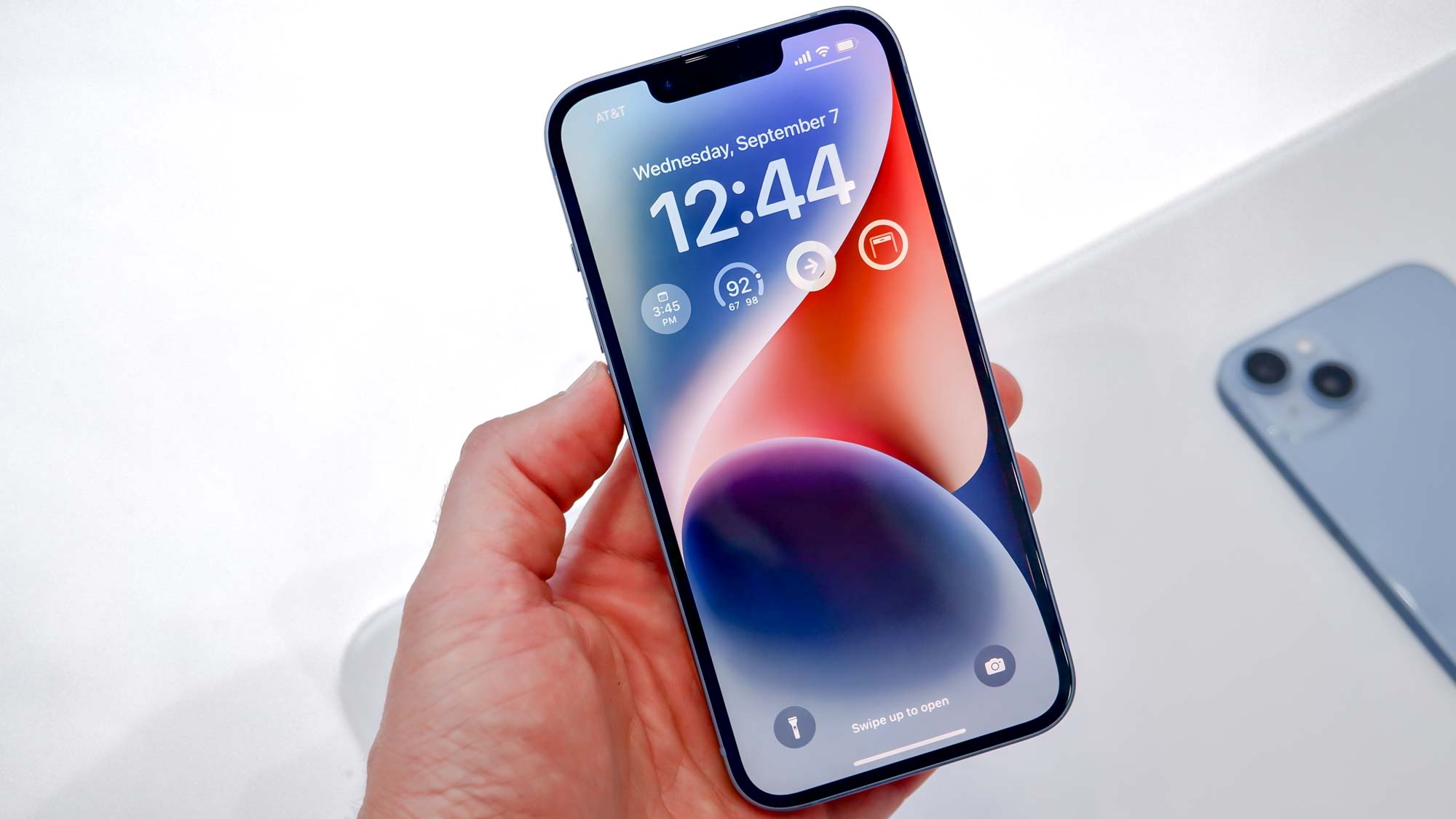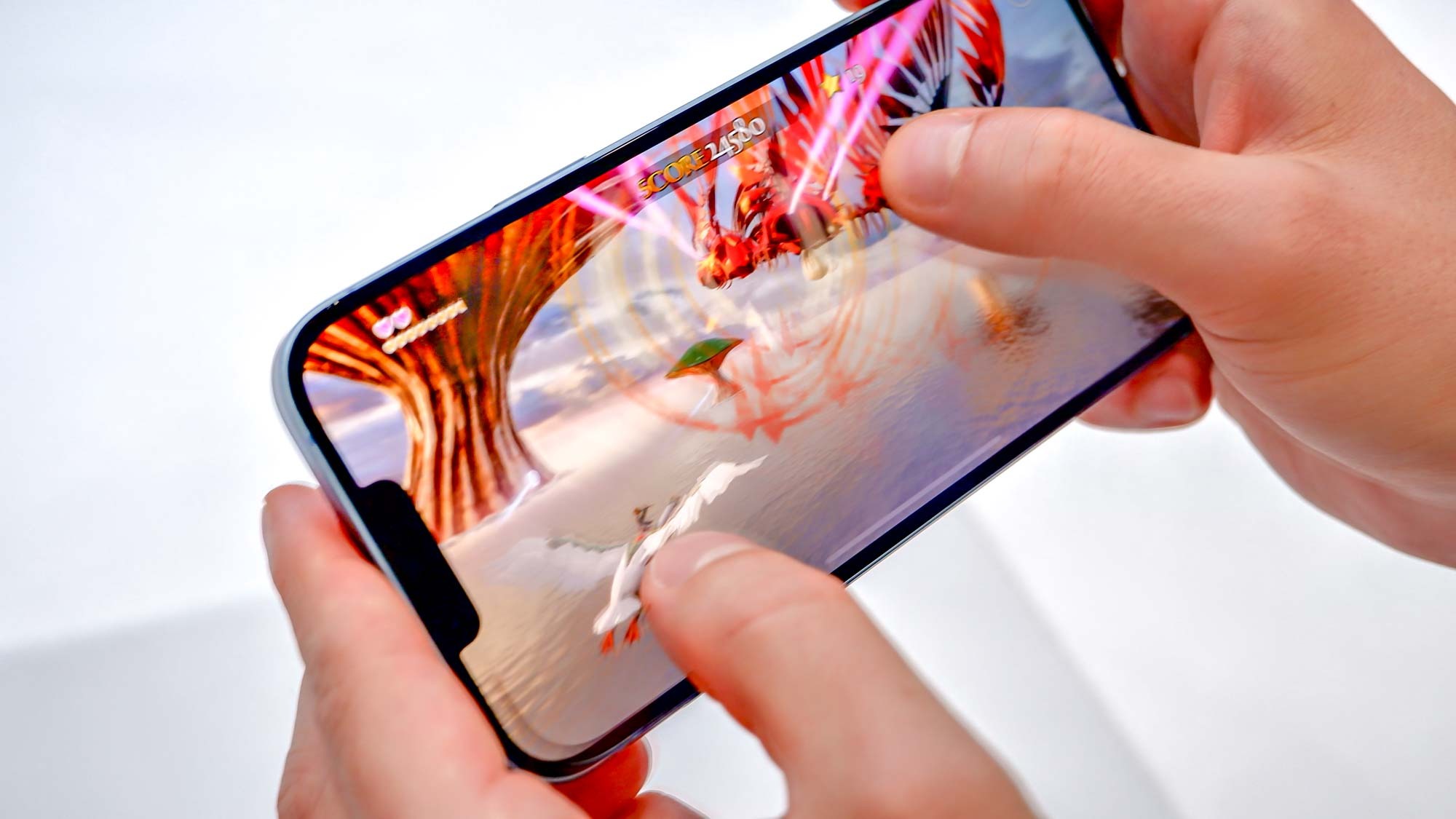iPhone 14 sticks with a 60Hz display — and that’s ridiculous
This is the one reason I'd avoid the iPhone 14

September’s Apple event was full of slick production and a suite of eye-catching products... and the introduction of features for iPhones that Android phones have had for years.
And I was fine with that, as the iPhone 14 Pro’s always-on display is more capable than what Android phones offer. And the new Dynamic Island actually offers a dose of innovation for how a display cut-out can be turned into a feature rather than a distraction.
But one thing left me cold: the iPhone 14.
Don’t get me wrong. The iPhone 14 has enough upgrades that have me suggesting you get it over the iPhone 13 that’s now $100 cheaper. But the fact that in the year two-thousand-and-twenty-two Apple has given a $799 phone a 60Hz display is laughable. Actually, no it’s insulting.
Hit me where it Hz

Now, I’ve long been a fan of high refresh rate displays, having first jumped on the 90Hz bandwagon with the OnePlus 7 Pro. Granted, the upgrade from 60Hz to 90Hz wasn’t huge but it was a noticeable difference in smoothness.
I can understand Apple wanting to keep its 120Hz display as a Pro iPhone feature for one generation, but to continue it for two is deeply disappointing.
The move to 120Hz was even more notable when coming from a 60Hz phone, making it very difficult to go back. This is one of the reasons I never used an iPhone 12 I had in for work as my main phone; as good as it was, the 60Hz display was just so jarring when compared to the smooth 120Hz of a Samsung Galaxy S21 or Oppo Find X3 Pro.
I only made the move from Android to iPhone with the iPhone 13 Pro, which finally got a 120Hz LTPO ProMotion display and made iOS feel superbly slick.
I can understand Apple wanting to keep its 120Hz display as a Pro iPhone feature for one generation, but to continue it for two is deeply disappointing. Sure, it could be argued it's a way to keep costs down and enables the iPhone 14 and iPhone 14 Plus to deliver impressive battery life. But I don't buy it when even mid-range to budget Android phones can stretch to a 90Hz panel at least.
By not equipping the iPhone 14 with a 120Hz or even 90Hz display, I feel Apple is doing some form of pseudo-gatekeeping for phone technology. We know how popular iPhones are in the U.S., so Apple is effectively holding back tech for many Americans to enjoy unless they fork out for a $999 phone at a time when the cost of living is rocketing.
I understand that the folks at Cupertino are not running a charity, but Apple touts itself as a driver of technology. So why not give its customers a high refresh rate display across the board? It’s not like the standard iPhone 14 is super cheap anyway; the Samsung Galaxy S22 comes in at $799 and it offers a 120Hz display as well as a telephoto rear camera.
Luckily, the adoption of high refresh rate displays has mostly penetrated the Android world, especially with the best Android phones, so in a way we don’t need Apple to set a tech standard here for others to follow. But it’s still frustrating when a company with such a vast reach saddles 50% of its new flagship phones with a 60Hz display.
With all that in mind, if you were to ask me what new iPhone I would buy and what I’d recommend, I’d have to go with the iPhone 14 Pro. The likes of a 48-megapixel camera and new A16 Bionic chip are compelling upgrades, while the Dynamic Island really does seem like a feature that may actually be great to use. Of course, I’d suggest you wait for full Tom’s Guide iPhone 14 reviews before making any buying decisions. Stay tuned.
Next: Here's why our Phones Editor thinks Apple went overboard on the iPhone 14 Pro always-on display.
Sign up to get the BEST of Tom's Guide direct to your inbox.
Get instant access to breaking news, the hottest reviews, great deals and helpful tips.
Roland Moore-Colyer a Managing Editor at Tom’s Guide with a focus on news, features and opinion articles. He often writes about gaming, phones, laptops and other bits of hardware; he’s also got an interest in cars. When not at his desk Roland can be found wandering around London, often with a look of curiosity on his face.

